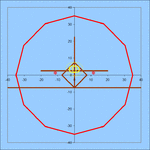Glider
Major
From what I understand of him getting shot down didn't he make an ambitious attack on two 109's and get jumped, or something similar?
To be honest I don't remember much I was caught in a heavy downpour without a coat and dived into a book/coffee shop until the rain passed. So I didn't read all the book, just the bits that interested me.

 2 Ball:AP:I mix would still yield 86% of the 4:4 AP:I mix' effectiveness
2 Ball:AP:I mix would still yield 86% of the 4:4 AP:I mix' effectiveness 